
Tearing through India's sex paradox: Rising infertility, less condoms, more babies
The country is grappling with rising infertility rates and stagnant growth in condom usage. Is there a way out?
 Image: Shutterstock
Image: Shutterstock
Moradabad, Uttar Pradesh
“I can’t tell you how excited I am,” beams soon-to-be-dad Deepak Kumar. A sales executive with an FMCG company in Delhi, Kumar reached his hometown last week, a few days ahead of the birth of his child. “My boss denied me paternity leave,” he says with a giggle. The snub, though, didn’t dampen his enthusiasm as he went on a shopping spree to welcome his baby: Diapers, towels, powder, lotion... “This will be my fourth child,” he proudly says on a WhatsApp video call from Moradabad, some 191 km from Delhi. “I know what all I need to buy,” he says smiling. His three kids—two boys, aged 3 and 5, and a nine-year-old girl—and parents are equally excited to have a new addition in the family.
‘But why so many kids,’ asks this reporter apologetically. “What’s your problem? I can take care of them,” Kumar dishes out a no-nonsense reply. The second question, probing about his use of condoms is also met with scorn. “Condom kills the fun of sex. I don’t get pleasure,” he says. “Lekin ye to AIDS se bachne ke liye hota hai na (Is it not used to not get infected with AIDS?),” he asks. “I have sex only with my wife,” he says, adding that his partner has been using emergency contraceptive pills since marriage. “Condom is not a man thing,” asserts Kumar, 29.
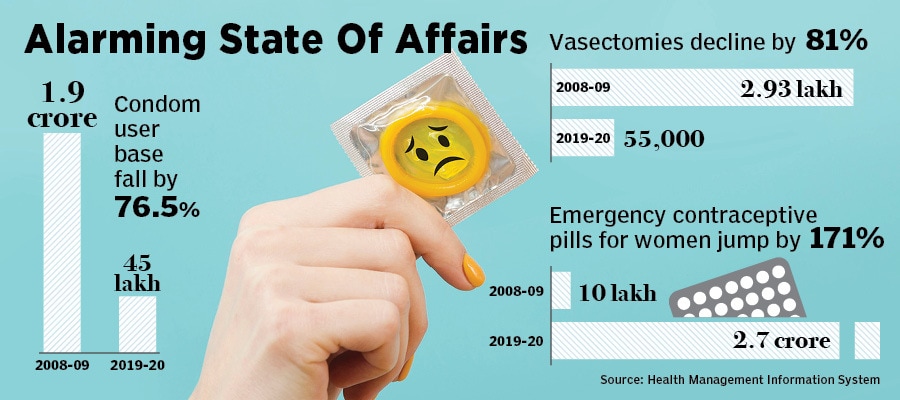
Meanwhile in Udaipur in Rajasthan, Anjum Gupta knew her man had a problem. A primary teacher at a government school, Gupta has not been able to conceive since she got married a decade ago. “I was labeled as infertile by my in-laws,” she says, her voice quivering. “Though medically I was okay, the stigma,” the 32-year-old lets on, “disrupted my life.” After much persuasion over the last five years, her husband, a commodity trader, relented to get medically examined. Dr Kshitiz Murdia is not surprised to know about the mental torture the teacher had to go through. “A disproportionate amount of onus is placed on females when a couple is unable to conceive,” says the chief executive officer and co-founder of Indira IVF, India’s largest infertility chain with 94 centres across India. In India, the topic of male infertility is rarely spoken about. “Approximately half of the total cases of infertility can be traced to the male factor,” he adds.






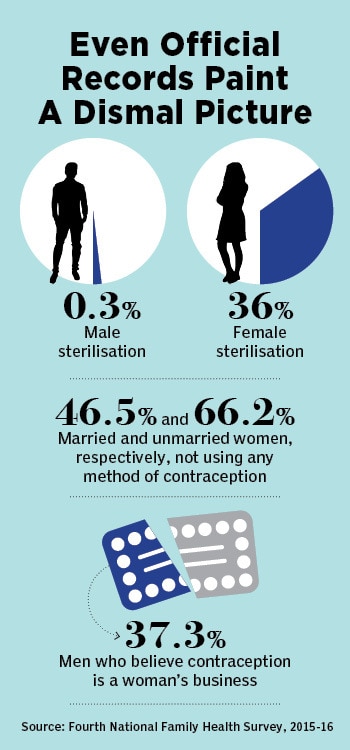 Cut to Bengaluru, around 1,720 km away from Udaipur. Nilay Mehrotra claims he has found the X factor to crack the male infertility problem. Two months back, the young entrepreneur rolled out India’s first at-home DIY (do it yourself) semen testing kit. The product by Janani, a reproductive health and sexual wellness startup co-founded by Mehrotra in June last year, eliminates the fear of being recognised at a sex or fertility clinic, which can be quite embarrassing. There is a huge elephant in the room and people have been ignoring it for so long, he stresses, alluding to the rising problem of male infertility. “We need to kill the stigma, address the issue and solve the problem,” he says. Indians, he lets on, need to end the taboos around sex issues.
Cut to Bengaluru, around 1,720 km away from Udaipur. Nilay Mehrotra claims he has found the X factor to crack the male infertility problem. Two months back, the young entrepreneur rolled out India’s first at-home DIY (do it yourself) semen testing kit. The product by Janani, a reproductive health and sexual wellness startup co-founded by Mehrotra in June last year, eliminates the fear of being recognised at a sex or fertility clinic, which can be quite embarrassing. There is a huge elephant in the room and people have been ignoring it for so long, he stresses, alluding to the rising problem of male infertility. “We need to kill the stigma, address the issue and solve the problem,” he says. Indians, he lets on, need to end the taboos around sex issues.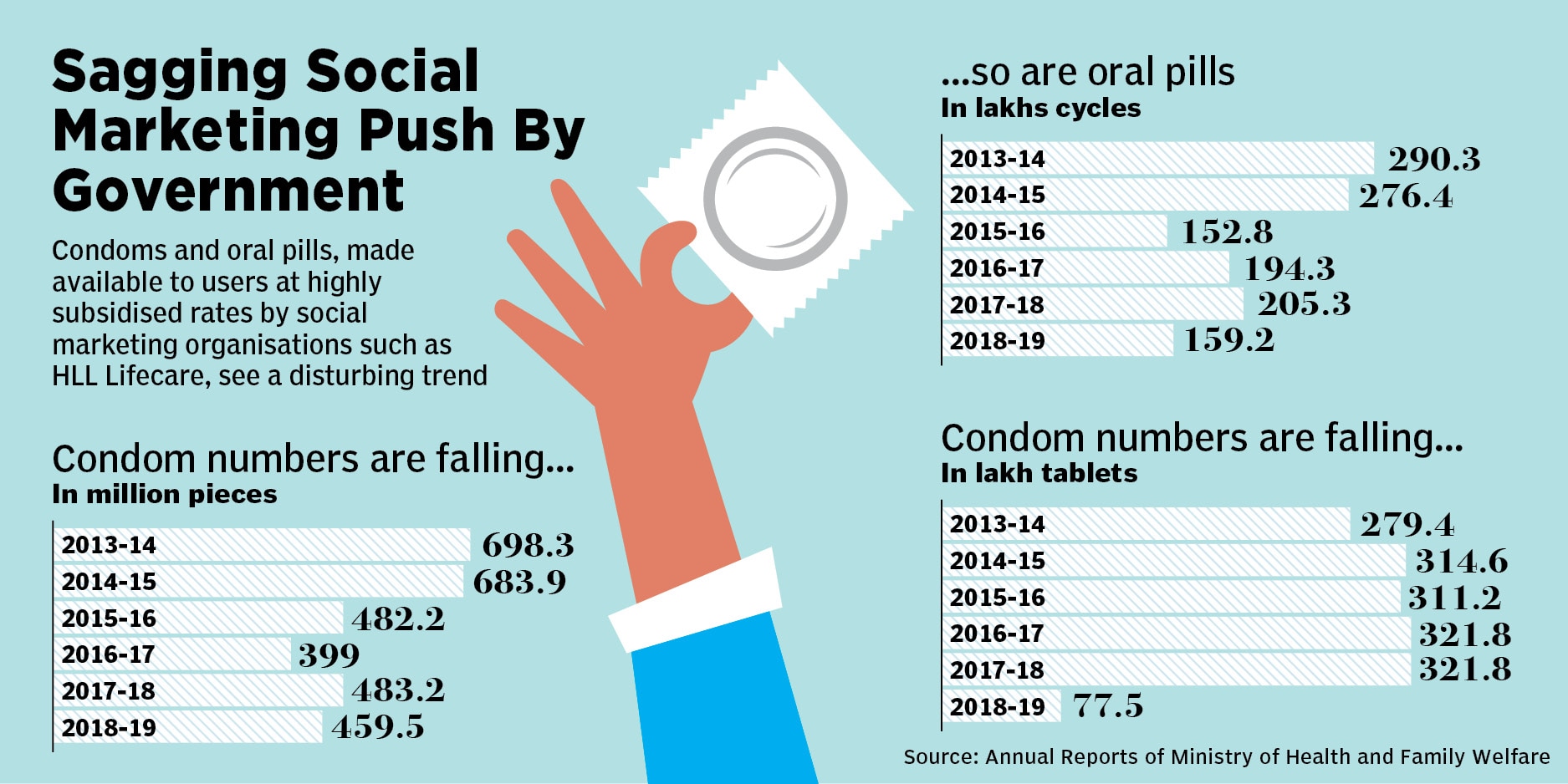



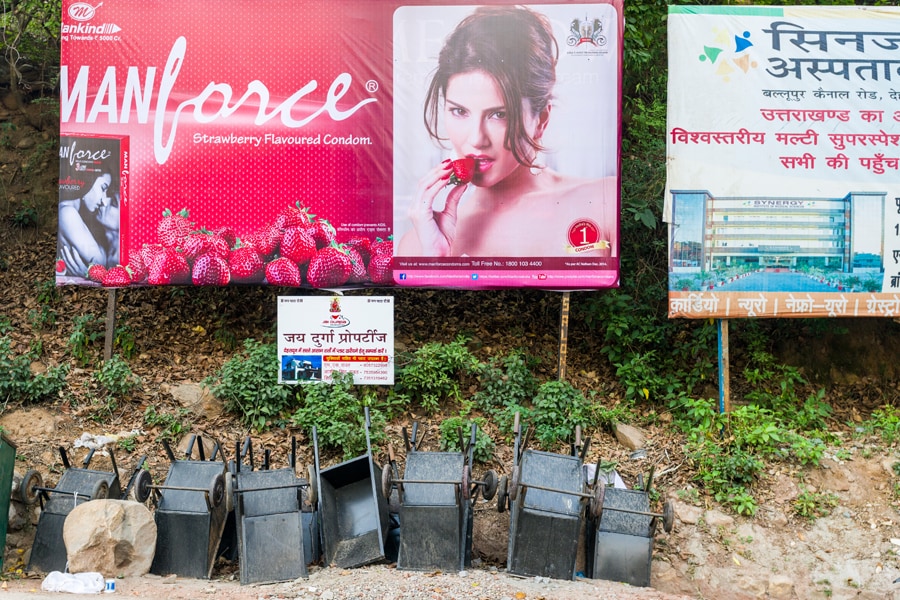
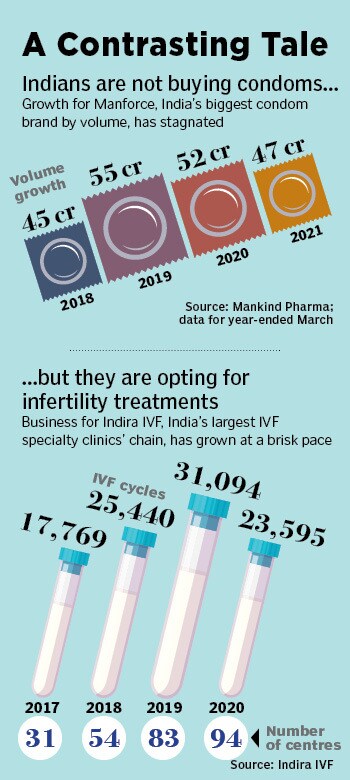 Marketing experts are not surprised by a subdued offtake of condoms in the hinterland. Reason: Faulty positioning of the product. “A condom was always billed as something that protects you against sexually-transmitted diseases,” says Ashita Aggarwal, marketing professor at SP Jain Institute of Management and Research. Protection became the dominant theme, as population control took a backseat. Another problem was not addressing the core issue. For a long time, most of the brands—including the ones made by government’s HLL Lifecare such as Moods and Ustad—never talked about how condoms didn’t interfere with the sexual act or pleasure. In a country where sex is still looked upon as a man’s act, and the female orgasm remains an alien concept, the men never had a reason to put on a condom. “Condoms did reach the village but the right message got lost in the transition,” she adds.
Marketing experts are not surprised by a subdued offtake of condoms in the hinterland. Reason: Faulty positioning of the product. “A condom was always billed as something that protects you against sexually-transmitted diseases,” says Ashita Aggarwal, marketing professor at SP Jain Institute of Management and Research. Protection became the dominant theme, as population control took a backseat. Another problem was not addressing the core issue. For a long time, most of the brands—including the ones made by government’s HLL Lifecare such as Moods and Ustad—never talked about how condoms didn’t interfere with the sexual act or pleasure. In a country where sex is still looked upon as a man’s act, and the female orgasm remains an alien concept, the men never had a reason to put on a condom. “Condoms did reach the village but the right message got lost in the transition,” she adds. 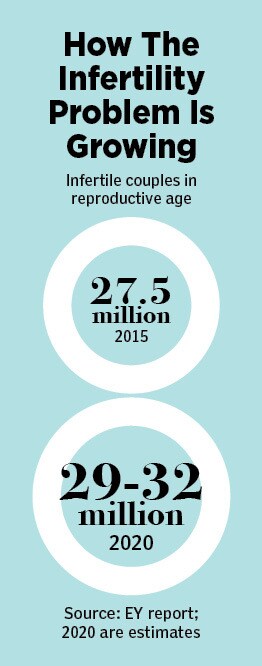 Clearly, the business of bringing joy into the lives of millions of childless couples is booming. An EY report in 2015 highlighted that India had 27.5 million infertile couples in reproductive age. Five years later, conservative estimates peg the number at 29-32 million. At Indira IVF, men in the age group of 30-40 contribute to the most footfall among all age groups. Additionally, men in the age group of 30-35 have witnessed a constant year-over-year growth from FY18 to FY20. “This indicates an increase in awareness about male infertility as more men come forward to seek treatment,” says Murdia, chief executive officer and co-founder of Indira IVF. Though conversations about reproductive health are slowly coming into the open, Murdia reckons it’s still early days. “We must keep this momentum going,” he says. The crux, he explains, is not only about having a child, but also understanding life-threatening diseases that individuals may have.
Clearly, the business of bringing joy into the lives of millions of childless couples is booming. An EY report in 2015 highlighted that India had 27.5 million infertile couples in reproductive age. Five years later, conservative estimates peg the number at 29-32 million. At Indira IVF, men in the age group of 30-40 contribute to the most footfall among all age groups. Additionally, men in the age group of 30-35 have witnessed a constant year-over-year growth from FY18 to FY20. “This indicates an increase in awareness about male infertility as more men come forward to seek treatment,” says Murdia, chief executive officer and co-founder of Indira IVF. Though conversations about reproductive health are slowly coming into the open, Murdia reckons it’s still early days. “We must keep this momentum going,” he says. The crux, he explains, is not only about having a child, but also understanding life-threatening diseases that individuals may have.



